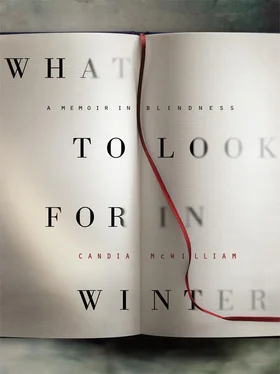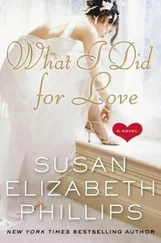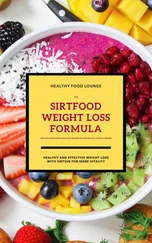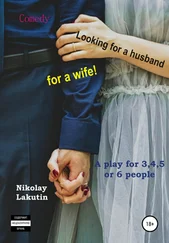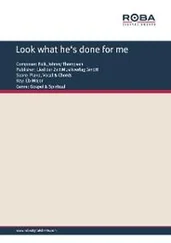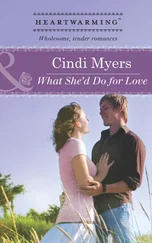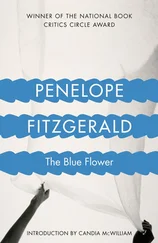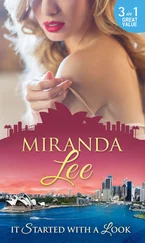In aesthetic terms, then, she hadn’t my father’s unerring line, but she did have colour. She loved magazines, as I loved comics. She longed to subscribe to the (then) French magazine Elle ; her first copy of it arrived the week after her death. I would have tea with other families because they took comics. Fat use I was as a playmate when all I did was lie on my tum and read comic strips about large families in the midst of a large family, like the Mitchisons who had an au pair and Patum Peperium for tea, or the Michies, who were Communists and had a nanny and had married one another twice and were to die together in a car crash in 2007. Then there were the Ordes who lived at Queensferry and sang madrigals and whose mother herself was so beautiful that she made cakes rise like her golden bun, and the Waterstones who taught me the Lord’s Prayer with ‘debts’ and ‘debtors’ in the Scots way and whose mother made me baked beans and of whom I said to my own mother, ‘Why can’t you be like Mrs Waterstone?’ in the last weeks of her life. I meant, ‘Why won’t you let me use the grill?’ or something, I suppose. God knows how Mummy heard those words.
Mrs Waterstone’s condolence letter arrived very soon. People were good to my father.
I don’t know exactly what my mother did. A pupil, some thirty years my senior, at a course I taught once told me that my mother had changed her will and my father had changed it back. What kind of person tells one these things? Another told me that she had broken up the flat of someone outside our family the day before she ‘did it’. I can’t see it. Is that the thing I’m refusing to see? That my mother was incontinent with grief during her last days? How could she not have been? Why else choose to die?
It would be frivolous to die without reason, wouldn’t it? Death is better perhaps than such consuming rage or misery.
All I want, for her, is to soothe her.
I do not swallow the ‘cry for help’ theory in her case, just as I don’t swallow the idea that she had a rotten go of flu, which she did, too.
She did not want to wake up on the following day. That day was to include events that she could not countenance.
I don’t even know if suicide was legal when she did it, or where her ashes are. I think she died in October. I know that I wore school uniform to the funeral and that I was horrified by the tidy curtains as she went away through them in her coffin. My friend Janey Allison, Janey who had never joined the anti-Candy gang, who grew up to be champion downhill ski-racer of all Scotland, and who could like Paul Klee hold a line boldly, in crayon as she could in snow, Janey’s mother cried at the funeral. She was a terse Scots blonde, Mary, née Ingalls, who was given to ticking us off in Latin at table in the farm kitchen out at Turnhouse, but she showed an affection I cannot forget. Janey I never see nowadays but can, right now, in her button shoes, aged four, or in her ballet gear, with the petersham belt. Our mothers were such friends as I hope we are still.
Mummy put me to bed in her and Daddy’s bed, and she told me that she loved Daddy. I have no idea whether she got down the pills, which were transparent and turquoise, with alcohol. Their name was Oblivon.
The next day took one of two forms.
Either I was taken to the home of the Professor of the History of Art, Giles Robertson, and his wife Eleanor in Saxe-Coburg Place, or I was taken by my mother’s cleaning lady, Mrs Stewart, whom I loved and called Sooty, to her house on an estate in Pilton. I can remember moments selected from each very disparate residence. Perhaps there were two days inside that one day. Oddly, I don’t know the year, though I think it was the year after President Kennedy was shot. I know that I wrote a long encomium to the President after the assassination, and that my teacher didn’t like the way I mentioned Mrs Kennedy’s pink Chanel suit; to mention garments was not ‘suitable’, a very Edinburgh concept at the time. If she’d known he was going to be assassinated, though, maybe she would have chosen something a wee bitty more practical? (Is this an especially Edinburgh consideration? In Muriel Spark’s The Driver’s Seat , the protagonist selects a specially non-stain-resistant dress to be murdered in.) I knew that it was peculiar, even distasteful, to think like this.
I can remember when President Kennedy was shot, and not when my own mother died?
I know. But it was so.
I knew that something was wrong when I saw my mother on her tummy in my bed. I think that she had on not a nightgown but a green wool dress. She had sewn me a pink pillow with grey kittens and pussy willow branches on it to help combat my nightmares about the Cauliflowers, who came out of the walls and stole your breath. I do not recall whether her head rested on this pillow at her end. That is all I saw, except that her head was to one side. It will never cease to appal me that my children have seen me from this angle on account of drink. How can I? How could I? How did I?
There’s nothing so dreadful-tasting that, if it is your poison of choice, will not make you take it. That is what addiction is. The worse it is, the more ‘unsuitable’, the more it seems to be what is made for you, your final course of just desserts, not someone else’s cup of tea at all.
That day, whichever day it was, that Mummy died, I waited for my father. At first it seemed to be with Sooty.
When Sooty’s husband Sandy came in from the Ferranti factory, Sooty took him into their kitchenette where their son David would sometimes melt lead to make soldiers. Sandy had braces and the family had a television. Sooty called Mummy ‘Maggie’. She said to Sandy, ‘It’s very bad with Maggie. I think she’s gone.’
Sandy had a blue shirt and the lino was like coloured pebbles. In the garden was an aviary for budgies. The kitchen furniture was yellow plastic with dots and lines in black and white. I loved Sooty’s curtains. They were printed with pictures of onions and carrots and Italian things like peppers, and implements, whisks, which we called beaters then.
Sooty let me beat up some evaporated milk till it got frothy and eat it off the spoon. Did Daddy come and get me? How much worse it must have been for him, exposed to his wife’s grief and pain for good.
How terrified he must have been. What could he do but what he did?
He told me the truth in the bedroom of the two youngest Robertson boys, Charles and Robert. We played together all our childhood, the three of us. The Robertsons were Quakers. The house, home of clever articulate children and a scholarly pair of parents whom I loved, was always filled with wonderfully tempered vocative tones of ‘thee’ and ‘thou’. Their father, Giles, was a Bellini scholar. He read to us, very fast, in the drawing room, under the Venetian chandelier. He read, for example, A Flat Iron for a Farthing by Mrs Juliana Horatia Ewing. If we grew restive, we played. Our favourite game was ‘Siesta Time on Mount Olympus’. We put on our counterpanes and played at being gods and a goddess. If we grew more restive, their mother, Eleanor, or one of the older children would say, ‘Thee must not romp in the drawing room!’
Maybe a year later I was to embarrass Charles by pretending that he was my ‘boyfriend’ so as to stop being nagged about the existence of such a person by other girls at school. I said that he looked like Napoleon Solo from the Man from U.N.C.L.E. television programme and the bubblegum cards that were a modish collector’s item among schoolgirls at that time. Charles had heard of neither. The Robertson children and I were all avidly reading Pale Fire at that point. More secret languages were being learned but I had grown too drawn by the double tongue of trying to fit in. We were preoccupied by the work and pacifism of Bertrand Russell; also by his home life.
Читать дальше
